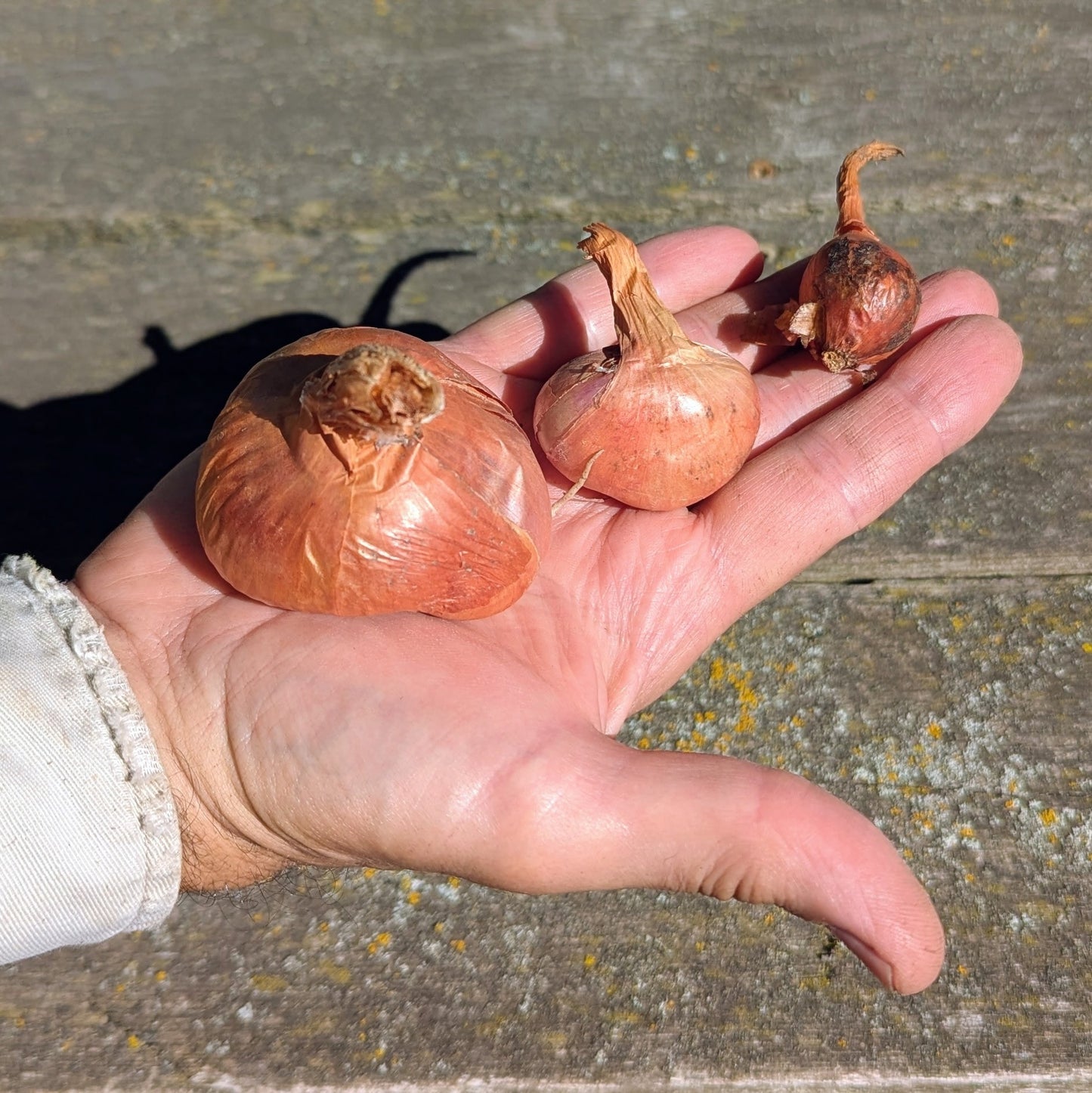Allium cepa aggregatum -- potato onion
Allium cepa aggregatum -- potato onion
Couldn't load pickup availability
Of the two undisputed champions of the perennial garden onions, this is a close second to its walking brethren, listed above. It often takes the top rank in our sometimes disputatious operation. Why, you ask? Roundness. Its shape is closer to what we have come to expect from a self-respecting onion. And a proper tunic. Thin, papery, soft, elegant. The pictures will confirm the overall stylishness of this multiplier onion. Few things are more pleasing than digging up 5 or 6 small-to-medium onions in August when one was planted the year before.
Cultivation: Full sun, well-drained, rich soil. Avoid excessive moisture. We’ve grown them in an unforgiving zone 4 hilltop, windswept, lonesome, loamy bed, but with lots of compost. We tested their mettle. For years. And they passed with flying colours. They keep better than regular onions, provided they’ve been cured (fancy gardenspeak for just let them dry on a table for a couple of weeks). Ours keep all winter. Replant the small ones immediately after harvest and the cycle of onion life continues. Or plant in the spring if you prefer, but it’s a busy enough time of year. They don’t seem to produce seeds, eschewing the messy business of sexual reproduction in favour of multiplicative cloning.
Food preparation: Look and feel like regular onions. Maybe a bit more bite? Definitely more enjoyable than store-bought since you will have lovingly tended them for a year. Easier to grow than regular onions, that typically take two years to mature from seed, and are not always very hardy.
Ethnobotany: There are records of their use in Medieval Europe. Their popularity waned with the advent of mechanical harvesting, more difficult with a bunching variety. But they are still popular with gardeners throughout the world, many of whom have grown them for generations in Scandinavia and the Baltics. Want onions for potentially difficult times? This is your bulb.
Share


